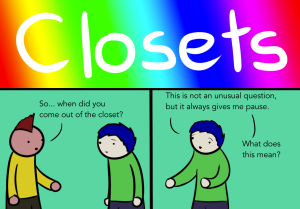
Source: Mentoring through Menopause
33,204,961.
That’s my (admittedly random) approximation of the number of times I’ve been called highly emotional or otherwise plastered with the overly sensitive label.
Though I disagree with the qualifiers, I’m in unabashed agreement with the adjectives.
For sure, I am both emotional and sensitive – traits that render me highly qualified to live, love, express, and explore as my authentic self.
How about you?
Do you find yourself dodging the punches as folks try to heal you of your apparent emotional ailments?
If you do, you’ve likely tried to process those opinions – you know, in the name of self-betterment and all – and you might even be working at becoming less sensitive and less emotional.
No prob.
Do your work; explore your experiences; see what you might see.
And as you do so, let me offer you some insights on the reasons people feel the need to label you, and your options for managing those labels.
The primary reason you get the label is because most people are uncomfortable with honesty.
Given the opportunity to express themselves, most people will not say what they actually feel.
Instead, they’ll say what they deem most appropriate, or they’ll keep it inside, and share it later with someone who has nothing to do with the situation.
Many of us grew up in environments that generally view honest verbal expression, particularly from women, as adversarial and even socially inappropriate. Opposition is unladylike, haven’t you heard?
When we women speak up for ourselves, or remove the filters from our emotional spaces, we are told we’re being complicated (I know you’ve heard that one!), or taking something “way too personal.”
Conversely, when most men speak up for themselves, they are apparently just saying how they feel.
There is a rather confusing dichotomy when it comes to women and expression.
On one hand, we’re told that men are not mind readers, and that they come from Venus (or is it Mars?) and therefore need us not to assume that they are intentionally doing or saying something that bothers us in some way.
On the other hand, when a woman does speak up for herself, whether in the home or in her professional space, she either gets the B-word label, or she’s overreacting to something, and therefore being overly emotional.
What’s a woman to do, then, if she values self-expression?
How can she address the emotion and have the other party focus less on the status of her emotional space, and more on the actual issue she’s asking them to address?
Generally speaking, the black-and-white approach to conversation is what’s deemed most appropriate.
We are taught to listen for details, run them through our filters and our knowledge, and then decide what category the information fits within our understanding.
When presented with gray-area elements like emotional responses or feeling versus thinking, we are often viewed as irrational, and even chemically imbalanced.
It’s insane how hormonal imbalances from things like PMS or pregnancy often get lumped in with the feminine trait of emotional processing. But with a bit of education, directed both inward and out to the intended recipients of our messages, we can perhaps shift the tide over time.
A Dose of Truth Serum
If your version of highly emotional or overly sensitive includes a raised voice, physical assertions, and wailing, you’re increasing your chances of not being heard.
This is not about you fixing something that is wrong with you – quite the contrary. It’s about teaching the outside world how best to communicate with you.
As much as you and I might loathe this reality, we do care how our feelings are received. Hopefully, this caring is reserved for a select few, and if we keep it that way, and pay attention to our bellies and our breathing each time, we can lessen risk of us compromising ourselves amidst the dialogue.
With the reality of our desire to be heard in mind, and our insistence on the high value of our emotions, here are some ways you can train the label-hurlers who matter:
Turn the Label into a Mirror
Recognize that someone’s assertion that you are being emotional is a feeling they are experiencing in that moment. Not so different from your feelings, save for the way they choose to express it.
You might let them know that you appreciate them telling you how they feel, and that their feelings matter to you.
Follow that up by asking them whether your feelings matter to them, and then move on from the reaction to the actual trigger.
The trigger is never (nope, ever) them calling you emotional; it’s the thing that got you to that emotional space to begin with.
That is where the work is, so try not to get distracted between the two.
Identify What You Needed from the Dialogue
How did this start in the first place?
If you want to align your need to express your feelings with dialogue that results in your assertions being considered, you’ve got to stop trying to address the emotional trigger, and instead get familiar with your desired resulting actions.
I am not telling you to quiet yourself or to mute your feelings, but I am absolutely encouraging you to set a place at the table for someone besides you to eat.
When it comes to dialogue, quite often, we mislabel the goal of self-expression. Usually, the goal is not only about saying how we feel, but also about conveying what we prefer. The two are not the same – not even close.
Expression has no expectation. It is about letting out what is within, with the primary focus being the outward motion of the thing from creator to outside world.
Self-expression in dialogue, however, is almost always done with an expectation in mind. Were it not so, it wouldn’t matter to you that you kept getting the stink eye and the labels hurled at you whenever you say how you feel.
Define for yourself, what you need from the dialogue, and be willing to use that as the focal point of your communication.
How it makes you feel certainly matters, but what you want from the dialogue is the only part the other party can actually address.
Your feelings have already happened, and perhaps the other party cannot change that. But, what can they do from this point onward?
Explore that – the desired resulting action – at least as much as you explore how you felt about what they did or said.
There’s a space between the emotional trigger and the emotion it triggers. That space is small, and perhaps for most of us, improbable to reach.
However, the space between the emotion and our resulting action offers an open field of opportunity for us to address our feelings with our desired result in mind.
—
Continue to educate the people in your world on the necessity and benefits of emotional awareness and sensitivity.
Introspection and clarity on what you want to accomplish from your decision to express yourself is a great partner for that decision to express yourself.
Remember, no one is actually responsible for how you feel; that’s based on your past, your filters, and your own internal processes.
What they are responsible for is what you tell them, what you show them, and whether they choose to adjust their behavior based on what you say you want.
By all means, express yourself in conversation, but know what you want just as much as you know how you feel.
That way, you can meet your recipients where they are (the what you need part), without filtering yourself, but also without holding them accountable for your happiness.
What they choose to do with what you say is their choice, but how you feel every day is yours.
Want to discuss this further? Login to our online forum and start a post! If you’re not already registered as a forum user, please register first here.
Akilah S. Richards is a Contributing Writer for Everyday Feminism. She is a six-time author, digital content writer, and lifestyle coach who writes passionately about self-expression, womanhood, modern feminism, location independence and the unschooling lifestyle. Connect with Akilah on Instagram, Tumblr, or her #radicalselfie e-home, radicalselfie.com. Read her articles.
Search our 3000+ articles!
Read our articles about:
Our online racial justice training
Used by hundreds of universities, non-profits, and businesses.
Click to learn more




















